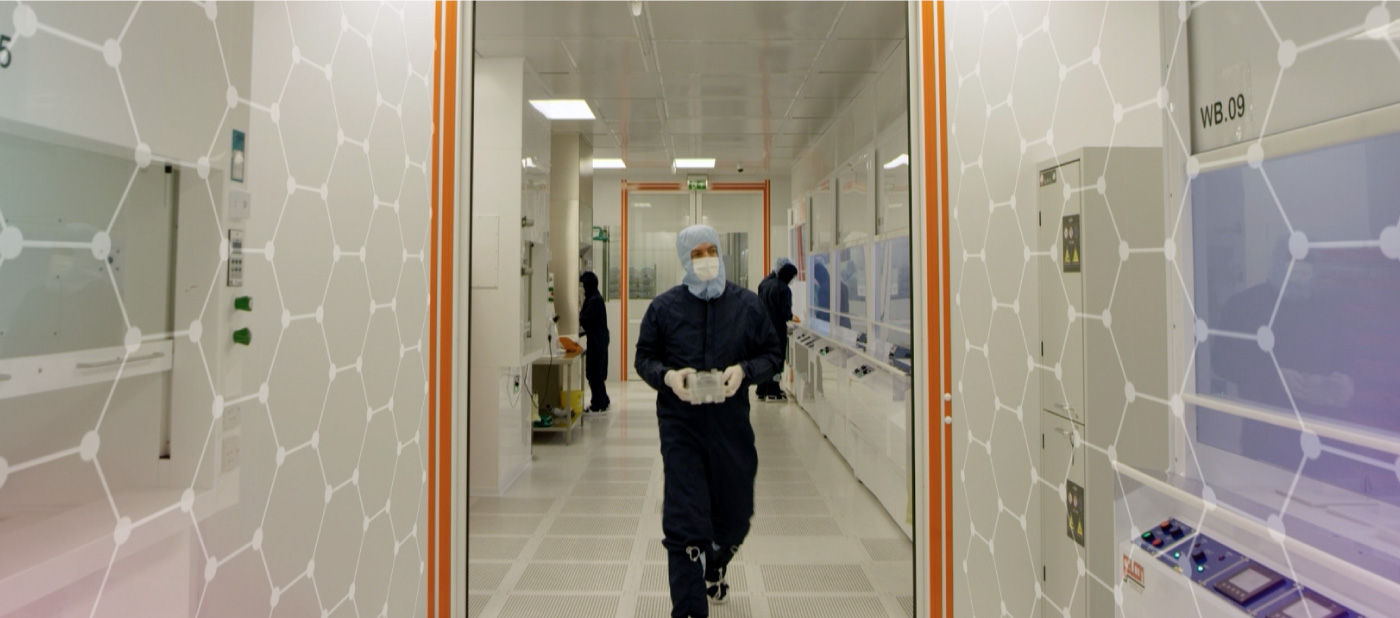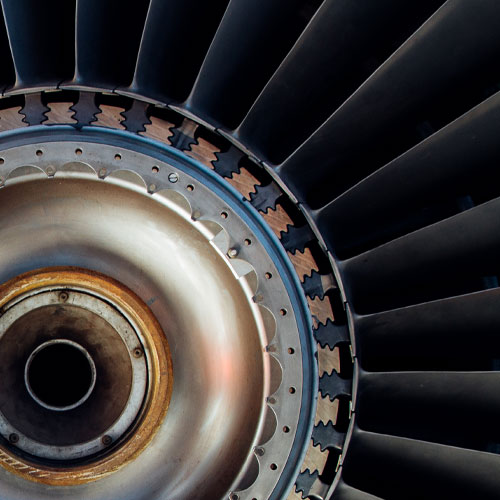The UK steel industry is facing a pivotal moment. Steel is critical to the modern world, and the economy of the future. The sector is currently very high profile, with British Steel’s Scunthorpe plant undergoing significant changes, amid financial challenges and a shift toward greener steel production. Earlier this month the UK government enacted emergency legislation to take control of British Steel, an intervention aimed at preventing the immediate shutdown of its blast furnaces and maintaining steel production in Scunthorpe.
Recognising the strategic need to safeguard the domestic steel supply chain, the Department for Business and Trade has been consulting with stakeholders on its forthcoming Steel Strategy. The Government is seeking views on the future direction of the UK steel sector, proposed areas of focus and where Government support should be targeted. Given its significance as a foundational material within the UK, the Henry Royce Institute worked together with several metallic materials experts across academia and industry to facilitate a response to the consultation.
The Rt Hon Jonathan Reynolds, Secretary of State for Business and Trade introducing the Strategy, said:
“The central mission of this government is growth. Steel can, and will, have an enormous role to play in driving that growth. As well as supporting our mission of making the UK a clean energy superpower, steel is a fundamental component in activities such as the construction of wind turbines, manufacturing the next generation of electric or autonomous vehicles, or building the infrastructure needed to sustain our digital economy.
“As we manufacture, using steel, we can generate jobs, innovate new products, create trading opportunities and support an enormous range of our manufacturing base which is critical to the economic growth of this country. This is the case in the growth markets identified in the industrial strategy, where we have the greatest possible opportunities to drive economic growth. Particularly in advanced manufacturing, clean energy industries and defence.”
Below is a short summary of the Royce Consultation response – much of which supports the detail within the Strategy Consultation document itself, with a number of additional points identified through the Royce consultation process for the National Materials Innovation Strategy as well as through specific consultations with key experts in the field.
Strengths of the UK Steel Sector
The UK steel industry holds unique strengths that provide a solid foundation for growth. Central to this is its production of high-quality specialist products, particularly for high-value markets like nuclear, defence, aerospace, and automotive. These sectors demand premium-grade steels, and the UK has built a reputation for excellence in this domain.
The UK has expertise in advanced steelmaking processes embracing Electric Arc Furnace (EAF), Argon Oxygen Decarburisation (AOD), and Vacuum Induction Melting (VIM). These processes enable the production of stainless, high-alloy, and ultra-pure steels (these are critical for cutting-edge applications like high strength and medical-grade materials).
One of the most promising opportunities lies in expanding EAF steelmaking – leveraging scrap steel and renewable electricity to reduce carbon emissions. This not only supports circularity but positions the UK as a potential leader in sustainable scrap-based steelmaking. In addition, digitalisation which embraces aspects such as digital passports and AI-driven process optimisation has the potential to further boost UK competitiveness in steel.
High-volume products that support key sectors such as construction, rail, packaging, car bodies, and line pipes are currently made using Blast Furnace-Basic Oxygen Steelmaking (Blast-BOS) grades. If and when the blast-BOS production routes are phased out, major steel companies will need to shift these grades to the scrap-based EAF steelmaking process.
The UK scrap sector and steel industry therefore have a shared opportunity to apply proven scrap segregation and sorting practices to support the production of traditional blast-BOS grades using EAF technology.
While the transition to Electric Arc Furnace (EAF) technology holds significant promise for the UK, the Government acknowledges that Scunthorpe’s traditional blast furnaces cannot simply be switched off. Maintaining domestic capacity for producing virgin steel remains essential, especially to support the critical infrastructure projects that drive economic growth. Securing the future of UK steelmaking will also require backing its transition to EAF, while ensuring the industry’s resilience in an increasingly volatile global trading environment.
Sector Challenges
While the UK steel industry has many strengths, it also faces a number of challenges.
Energy costs, particularly the high price of green electricity compared to EU competitors, continue to be a serious pressure, especially as the sector transitions to EAF technology. Unless addressed through government support and new energy sources, this could continue to undermine the industry’s ability to compete globally.
In addition to the cost of energy, a critical concern is its availability – specifically, whether the national grid can reliably supply the massive, on-demand power required by the Electric Arc Furnaces (EAFs) of the future. This question is particularly urgent given the unique nature of EAF operations, which demand enormous surges of energy at the push of a button. The ability of the grid to meet these very high and instantaneous demands will be essential to ensuring both operational efficiency and the broader viability of future steel production powered by EAFs.
An additional and significant problem is reduced investment in research and innovation, coupled with underinvestment in both infrastructure and workforce development. This is all compounded by a public perception of steelmaking as outdated and dirty, which has a negative impact on bringing new talent into the sector.
What Needs to Be Achieved by 2035
The consultation asked what do we need to have achieved in 5 years’ time to be on track to deliver a successful and competitive steel sector in 2035?
Equally vital is capital investment in downstream operations – casting, forming, and finishing -, which have been neglected in recent years. Energy reform is imperative; a decoupling of electricity prices from gas costs will be crucial, and region-specific pricing structures should be explored, which could position areas like Scotland, the North, Wales, Teesside, and South Yorkshire as key hubs for low-carbon steelmaking due to their access to renewables and existing industrial base.
Industrial Strategy: tailored investment
The steel industry plays an essential enabling role in the UK’s broader industrial ambitions. For example, the shift to renewable energy is underpinned by steel demand – from offshore wind turbines to next-generation nuclear reactors. A £21 billion market for wind turbine steel alone illustrates the scale of the opportunity.
Steel is a fundamental part of everyday life underpinning construction, civil infrastructure, packaging, transportation, and general engineering. As a versatile and sustainable material, it offers environmentally responsible solutions across multiple industries. It also plays a critical role in supporting cutting-edge sectors such as space exploration, data centres, renewable energy infrastructure, and advanced manufacturing.
The response asserts that the UK steel industry needs tailored investment across three main categories:
Fundamental Research – focused on metallurgical innovation, decarbonisation, and digitalisation. Government-led innovation funding is required here.
Translational Demonstrators – public-private collaborations that de-risk and scale up new technologies and systems, such as pairing energy providers with steel manufacturers.
Industrial Investment – funding to modernise infrastructure and scale-up commercial technologies, beyond support for basic infrastructure.
To sustain innovation the UK must also address skills and knowledge exchange. Over the past two decades, the steel sector has experienced sustained job losses, driven by increased technological adoption and a decline in steel production volumes. This ongoing trend threatens the retention of specialist skills and expertise, highlighting the urgent need for effective knowledge transfer mechanisms.
In parallel, the rapid pace of technological advancement demands a strategic focus on workforce development. Upskilling current employees and training the next generation is essential to ensure the industry remains competitive.
There is a critical need for skilled professionals in ferrous metallurgy, sustainability, and digital technologies. As the industry embraces AI-optimised processes, digital literacy will become just as vital as traditional metallurgical knowledge.
Attracting talent remains difficult due to the above-mentioned outdated perceptions of the industry. Promoting the steel sector as innovative, and technologically advanced, transitioning to a sustainable and green industry is essential. Indeed, the steel industry is known for its ability to innovate – often in the face of adversity – and is no longer epitomised by the smoke emitting factory of yesteryear. An industry-led doctoral programme (akin to a Centre for Doctoral Training) was cited as one route to provide the depth and breadth of knowledge needed to futureproof the sector.
Policy reform is also important – government can support circularity by incentivising scrap use and penalising the export of useful, unprocessed waste. Embedding circular economy principles into product design, manufacturing, and end-of-life processing will improve domestic scrap recovery and reduce dependence on imports.
The Road to decarbonisation
Transitioning from traditional blast furnaces to EAFs, combined with a shift to renewable-powered industrial heat and electricity, represents the biggest decarbonisation opportunity. Minimising overseas scrap export and product import will also reduce emissions linked to transport.
The UK steel industry has both the legacy and the potential to become a global leader in sustainable, high-quality, and digitally enhanced steel production. However, achieving this vision requires urgent action particularly in research funding, skills development, infrastructure investment, and energy policy reform.
By embracing innovation, encouraging circular practices, and enhancing collaboration between government, industry, and academia, the UK can re-establish its steel sector not only as a cornerstone of domestic industrial capability but also as a model of 21st-century manufacturing.
As this article goes to press, questions remain about the long-term future of the British Steel site in Scunthorpe, and whether it will be fully nationalised or if the private sector will get involved. We will update the article as further announcements are made. Alongside these developments, Tata Steel’s decision to invest in a new Electric Arc Furnace (EAF) at Port Talbot is seen as a positive sign, representing a significant step towards a greener and more sustainable steel industry. This investment is supported by UK government funding.
The Henry Royce Institute is committed to supporting both policy development and to linking academia and industry, ensuring a thriving and innovative steel sector in the UK. It will continue to input to the development and delivery of a comprehensive steel strategy that balances environmental targets with economic and national security.



